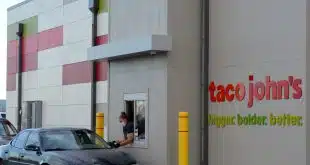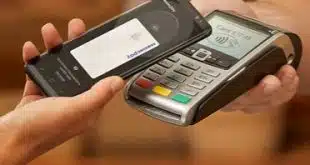With Christmas day looming, retailers that issue digital gift cards, along with the vendors that supply them, are expecting a rush of last-minute purchases from shoppers who don’t have time to buy plastic cards. With e-cards flying out to the handsets of recipients at parties and in homes and offices, “phones will be vibrating all over the country,” predicts Tom Niedbalski, senior vice president of business development at Transaction Wireless Inc., a San Diego-based e-gift card platform supplier.
Indeed, Niedbalski says the Christmas season, as important as it is for gift card sales generally, throws into relief what has turned into a year-long boom for digital cards. He says more than 40% of online gift card sales for client merchants are now for e-cards that can be delivered via e-mail or mobile text message. “There’s definitely a major trend,” he says. Beyond this year, 2012 will be even bigger, he forecasts. 2008 and 2009 were “wait-and-see” years for retailers, he says, and now more and more of them are adopting non-plastic gift card options. “They’re done waiting,” Niebalski says. “2012 is definitely going to be a huge, huge increase over 2011.” Transaction Wireless, he adds, already has a full plate of implementations set for the first quarter.
Starting with a quartet of retail clients two years ago, the company now provides digital and plastic gift card services directly to more than 40 merchants. Recent signups include specialty merchant Sport Chalet, restaurant chains Red Robin and Buffalo Wild Wings, and athletic-apparel emporium Finish Line. Transaction Wireless also supplies services to another 60 merchants through partnerships.
Major chains have taken notice of the trend toward digital cards. Some 36 of the 100 largest brick-and-mortar chains have adopted the product, up from 33 a year ago, according to Mercator Advisory Group, Maynard, Mass. Of the 100 largest online merchants as ranked by Internet Retailer magazine, 59 offer a digital option, compared to 40 last year.
But Mercator is more reserved about the extent to which digital cards are being adopted. Of the $38 billion Mercator estimates consumers will have loaded onto closed-loop gift cards in the last two, crucial months of 2011, only about $200 million will have gone into virtual plastic. “2012 is going to be the year to watch to see if we’re moving into mass adoption,” notes Tim Sloane, director of the prepaid advisory service at Mercator. “We’re not there yet.”
Niedbalski says the convenience of digital cards is largely driving consumers to send them as gifts. The products can be purchased and sent via PC or handset with relative ease, and they allow for personalization via recorded messages, photos, and even video. “Plastic cards are one-dimensional,” he says. “With digital, you get the full multimedia experience.” At the same time, he says, issuers favor digital because it eliminates the costs of plastic fulfillment. Plus, he says, “the [retail] brand benefits from being part of that [multimedia] experience.”
Even so, says Sloane, digital cards aren’t always so easy for the recipient. They “can be pretty challenging for the individual,” he says, noting that users must typically print out the messages to take to the store, then keep the printouts or print them out again if they spend only part of the stored value. “You have to be very organized,” he notes.
Emerging media such as barcodes can solve the disconnect between electronic delivery and physical redemption, Sloane says, but making the redemption electronic as well. With this technology, the “card” appears on the user’s phone screen encoded in a barcode, which the cashier can scan. This is the scenario that Starbucks Corp. is using in its mobile prepaid card program, for example. But this option may for the time being at least be limited to retailers with a tech-savvy clientele, Sloane says. “Starbucks has a pretty special customer base,” he says. “A large portion happen to have smart phones. You can’t say that of [convenience]-store customers.”
Transaction Wireless, though, remains bullish for 2012. Merchants that have been running their own virtual gift card platforms in-house are starting to approach the company, Niedbalski says. “A lot of those brands have an e-gift card 101 program,” he says. “They want to terminate that program and come over to our program, where we can bring them up to speed.” Typically, the company earns its income through a revenue share with the client retailer.
Five-year-old Transaction Wireless first made news more than two years ago with a mobile app that allowed any cell phone to accept credit cards via PayPal Inc.’s Website Payments Pro platform. But, while the company still offers the app and is still boarding merchants on it, that product is no longer its central focus. “We have turned out focus more on the retail e-gift card market,” Niedbalski says.




